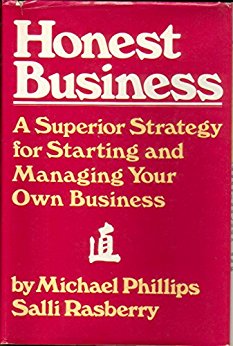Blog
Of Historical Note
In the Briarpatch’s early years, our open books practice spread by word of mouth to counterculture businesses coast to coast. This set the stage for the launch of the “open-book management” movement popularized in the early 90s by Jack Stack and John Case in their books, respectively,
• The Great Game of Business: Unlocking the Power and Profitability of Open-Book Management
• Open-Book Management: The Coming Business Revolution.
Stack chronicles the story of an International Harvester factory in Springfield, Missouri that headquarters was putting on the chopping block. The 130 or so managers and employees who were about to lose their jobs lucked onto the opportunity to buy the factory. Knowing they were about to become unemployed, in a moment of seeming madness, the group came together cooperatively to make it happen.
Loaded down with debt, little capital, and big uncertainty about the sanity of their cooperative decision, they uncovered the same principles we in Briarpatch had been practicing since the early 70s: openness, honesty, and the sharing of financial records makes the impossible possible. The new company known as Springfield Remanufacturing grew across the next 10 years into a conglomerate of small businesses, all serving the supply chain for International Harvester and other truck manufacturers.
John Case, for his part, explained in detail how “open-book management” works and included anecdotes about dozens of small and medium-sized companies that successfully adopted the principles of cooperation and openness; companies like Southwest Airlines, Wabash National, Herman Miller, Chaparral Steel, and, of course, Springfield Remanufacturing.
Unknown to Briarpatch, Springfield Remanufacturing, or Case and his cases, we all three had been preceded by the “open management” movement of the 1960s as described by HR professional Vincent Kafka and counseling psychologist John Schaefer in their book Open Management: How to Increase Job Satisfaction for Employees and Job Performance for Management.
“Open Management” was a new concept in the early 1970s meant to uncover practical ways to apply the work of Douglas McGregor, a management professor at the M.I.T. Sloan School of Management. McGregor himself was looking for practical applications of psychologist Abraham Maslow’s Theory of Human Motivation developed in the 1940s, specifically his “hierarchy of needs.”
In his book The Human Side of Enterprise, McGregor described managers’ propensity to create one of two types of work environments: one within which employees are motivated via authoritative direction and control or one within which participatory decision-making and self-control are emphasized. McGregor labeled these two different management “paradigms” Theory X and Theory Y, respectively. Theory Y was a lighthearted application of Maslow’s hierarchy of needs within the workplace as an example for teaching purposes. Ironically, many academics and managers took it literally and attempted to apply Theory Y using authoritative direction and control. They had mistaken McGregor’s musings as proscription and failed to see that they were using Theory X to force people to behave in accordance with Theory Y. Few of these experiments in actual workplaces succeeded.
Remarkably, Kafka and Shaefer’s book set the stage for the successful application of honesty and openness on the job. However, they had missed the crucial financial component and so their method had limited success until, that is, Briarpatch, Springfield, and the example companies shared above began to integrate all three (honesty, openness, and sharing of financial information) into their work environments.
We weren’t sure where we got the idea of openness. Perhaps those of us who attended college in the late 1960s and early 1970s were exposed to Maslow in our psych courses and/or McGregor in our business classes. Alternatively, maybe we “just knew” intuitively that honesty, openness, and shared financial records were superior strategies.
However we came to adopt these principles, the application of them. with other Briar practices, created an entrepreneurial environment in which our success rates appeared to be the opposite of the 80% failure rate reported for the mainstream culture.
You can read more about the history and principles of The Briarpatch by checking out the three books pictured here. Just click on a cover image and jump to a description page.
Stay In Touch


